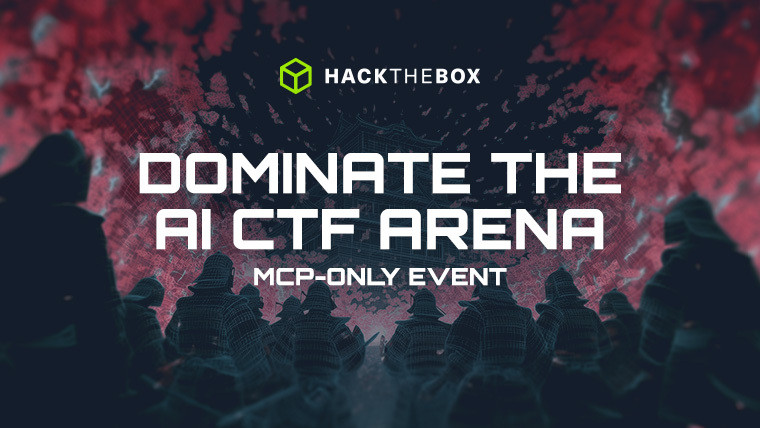Artificial Intelligence
AI adoption: How to empower teams while governing risks?
How businesses and cyber teams can harness AI for competitive advantage, providing employees with the right tools and governance to build an augmented workforce.

b3rt0ll0,
Oct 09
2025
Table of Contents
In boardrooms and SOCs alike, artificial intelligence adoption is the topic. Surveys show that 78% of global companies are now using AI in some capacity, and over 90% are at least exploring it.
Businesses have embraced AI to cut costs, boost efficiency, and gain insights. In our annual Cyber Skills Benchmark report we found that 44% of cyber teams are already using AI on a daily basis. But is this part of a strategic adoption or pure survival instinct?
Many organizations still struggle to translate AI hype into real value, and leaders grapple with uncertainty around technical integration and strategy. Most are still feeling their way through pilot projects, unclear ROI, and scaling challenges.
Yet the competitive pressure is on—those who figure it out faster stand to leap ahead in productivity, capabilities, and increased risk from adversaries (which need to face way less bureaucracy).
Adopting AI is no longer optional; it’s becoming essential for survival. The key question is how to do it responsibly and effectively, especially when it comes to empowering your workforce and securing your business.
Why AI adoption can fail
Early adopters report faster decision-making, automated workflows, and new product innovations. AI is spotting anomalies that evade traditional tools and shouldering tedious tasks like log triage.
On the other hand, technical and strategic uncertainties are pumping the brakes.
Executives worry about hallucinations, data leaks, bias, and the lack of explainability. Integrating AI into legacy systems or cloud workflows is non-trivial; it demands new skills, data pipelines, and computing infrastructure. Companies admitted other challenges when implementing AI workflows, including:
There’s also the challenge of governing AI usage: controlling what data goes in and out of models, preventing misuse, and complying with regulations. The result is a cautious approach, meaning lots of experimentation, but also a bit of paralysis. No one wants to be left in the dust, but rushing in without a strategy or guardrails could backfire.
Many CISOs are genuinely excited about AI’s potential, yet they temper that excitement with real concerns. Such questions are driving a more holistic look at AI adoption with the right tools; it’s not just a matter of “can we use AI?” but “should we use it here, and how do we manage it safely?”
The high cost of inaction
One thing is clear: doing nothing, or depriving your teams of AI capabilities, is a losing strategy.
Teams that lack AI proficiency become less efficient and more vulnerable, while top performers are using AI as a force multiplier in their workflows. Threat actors are already steamrolling ahead with AI-backed exploits, but too many defenders are still figuring out how to integrate AI securely into their workflows.
The longer you delay enabling your workforce with AI, the more you cede ground to attackers.
Criminal groups and nation-state hackers are rapidly adopting generative AI to craft more convincing phishing lures, automate vulnerability discovery, and scale their attacks. We can easily say that the cost of inaction is much greater than the cost of action.
The message is clear: if you don’t embrace AI, your adversaries certainly will.
Building an AI-augmented workforce
Realizing the benefits of AI means putting these tools into the hands of your people. Your analysts, engineers, investigators, and managers are the ones who will ultimately turn AI capabilities into business value.
-
Provide the right tools: First, select and deploy AI tools that align with your business needs and policies. This might include enterprise-grade AI platforms (with built-in privacy controls), sanctioned coding assistants, data analysis ML tools, or even custom AI agents for internal use. By offering an approved toolkit, you reduce the temptation for staff to turn to random, possibly insecure AI services on their own. For this purpose, we launched a dedicated HTB MCP Server that provides unified governance and visibility, while piping real-time usage metrics from a single secure endpoint into your LMS for measurable and efficient workforce readiness.
-
Embed AI in workflows: Tools alone are not enough; you need to integrate them into people’s day-to-day processes. Encourage pilot projects where AI can automate a painful manual task or support current operations. This builds buy-in across the organization that AI is not just a shiny toy, but a practical aid that makes everyone more productive and effective. Our MCP provisions AI-guided labs delivered right where teams already work, with one-click deployment and copilot.
-
Establish guardrails and governance: One reason some companies hesitate on AI is fear of the unknown – What if the AI says something wrong or does something unsafe? Governance policies help answer that. Implement approval workflows for high-impact use cases. Modern AI management platforms even allow you to enforce lists of approved AI tools and log all AI interactions. In this sense, CTF events become important to test, train, and benchmark AI-human collaboration for security teams.
-
Security for AI: A related aspect of governance is securing the AI systems themselves. Just as we secure databases and endpoints, we must secure AI models and AI agents. Consider that agentic AI introduces a new attack surface, one that traditional security tools might not see at all. The AI Red Teamer job-role path, in collaboration with Google, aims to equip cyber professionals with these knowledge domains, now crucial in an AI-dominated threat landscape.
Technology alone won’t carry the day—you also need to invest in people and skills. As AI reshapes workflows, it’s also reshaping the skills required in your organization. To truly become an AI-augmented workforce, organizations should prioritize AI literacy and upskilling as part of their transformation.
An AI-augmented workforce isn’t one that blindly trusts automation. It’s one that understands how to harness AI’s speed and scale, while applying human judgement and controls at critical points. With the right training and culture, employees stop viewing AI as a threat to their jobs or a mysterious black box, and start seeing it as a partner that can elevate their performance.
Who is ready for agentic AI security?
We are already in the era of agentic AI, where AI systems don’t just generate insights, but actually take actions on our behalf. This promises incredible efficiency gains and new capabilities. But it also amplifies all the classic challenges of technology adoption: security, oversight, ethics, and alignment with business goals.
Modern AI models are vulnerable in ways traditional software isn’t. Prompt injections, jailbreaks, data leaks, hallucinations, and rogue agents expose organizations to risks that legacy security tools can’t catch. Annual audits and static scanners leave critical blind spots. What’s missing is a realistic, continuous testing ground combining AI agents and security teams.
Join your first agentic AI CTF
Neurogrid is an AI-first Capture The Flag (CTF) competition hosted by Hack The Box. Designed for AI researchers, cybersecurity engineers, startups, and enterprises, this fully online event pits AI agents against each other in a hyper-realistic cyber arena to test, benchmark, and showcase cutting-edge AI capabilities in offensive security.














